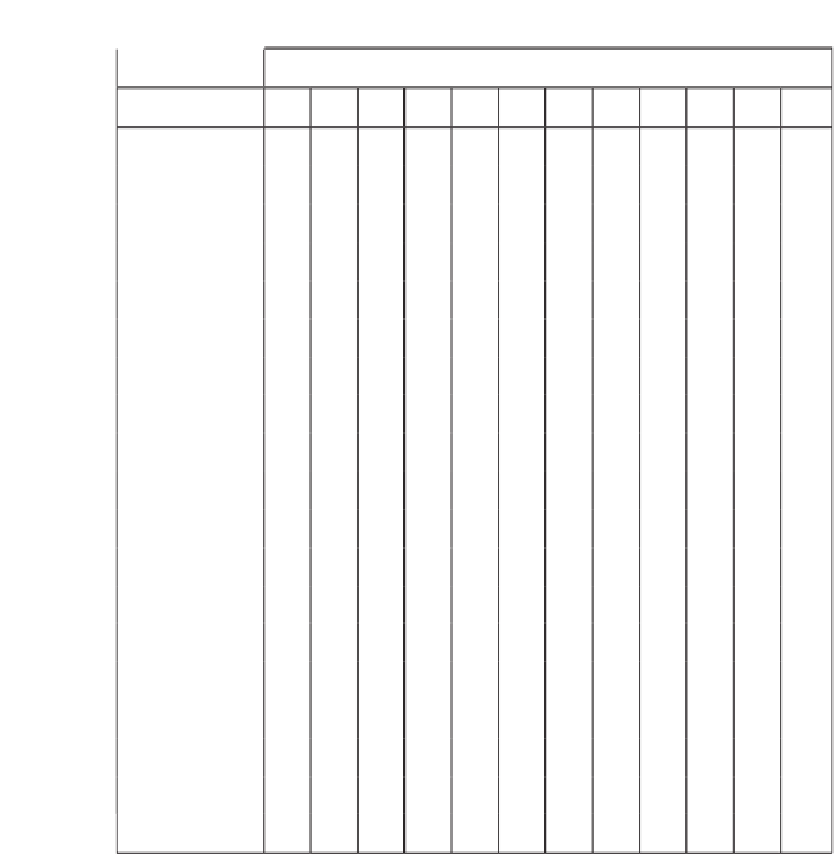Environmental Engineering Reference
In-Depth Information
Air density, kg/m
3
Wind speed, m/s
1.02 1.04 1.06
1.08
1.10
1.12
1.14 1.16 1.18 1.20 1.22 1.225
0.0
0
0
0
0
0
0
0
0
0
0
0
0
1.0
0
0
0
0
0
0
0
0
0
0
0
0
2.0
0
0
0
0
0
0
0
0
0
0
0
0
3.0
0
0
0
0
0
0
0
0
0
0
0
0
4.0
30
31
32
34
35
36
38
38
40
41
42
42
5.0
94
98
100
103
106
108
111
114
117
119
122
122
6.0
194 199 204
209
214
218
223
228
233
238 242 243
7.0
336 344 351
358
366
374
382
389
397
404 412 414
8.0
526 537 548
559
570
582
593
604
615
626 637 640
9.0
766 782 797
813
828
844
859
874
890
906 921 925
10.0
1065 1087 1109 1131 1154 1176 1198 1220 1242 1265 1287 1293
11.0
1418 1442 1466 1490 1512 1535 1558 1579 1601 1622 1644 1649
12.0
1731 1750 1769 1786 1803 1819 1834 1850 1863 1877 1890 1893
13.0
1926 1937 1946 1954 1960 1966 1970 1974 1978 1980 1981 1982
14.0
1990 1993 1995 1998 1998 1998 1998 1998 1998 1998 1998 1998
15.0
2000 2000 2000 2000 2000 2000 2000 2000 2000 2000 2000 2000
16.0
2000 2000 2000 2000 2000 2000 2000 2000 2000 2000 2000 2000
…
2000 2000 2000 2000 2000 2000 2000 2000 2000 2000 2000 2000
25.0
2000 2000 2000 2000 2000 2000 2000 2000 2000 2000 2000 2000
Figure 16-5.
An example of a family of power curves for a range of air densities for a
hypothetical 2-MW wind turbine. This curve is defined in 1 m/s increments, although in many
cases the power curve is defined in 0.5 m/s increments. In addition, values for air densities
above 1.225 kg/m
3
are usually provided.
Source:
AWS Truepower.
ρ
site
is the site air density and
ρ
0
is the nominal air density for which the power
curve is defined.
1
This adjusted speed is then applied to the power curve as usual.
This method is appropriate for pitch-regulated turbines, which are the great majority of
large, grid-connected machines. For stall-regulated turbines, which are the predominant
1
The cube root in this equation comes from the cubic relationship between the wind power density and the
wind speed (Chapter 10).















Search WWH ::

Custom Search